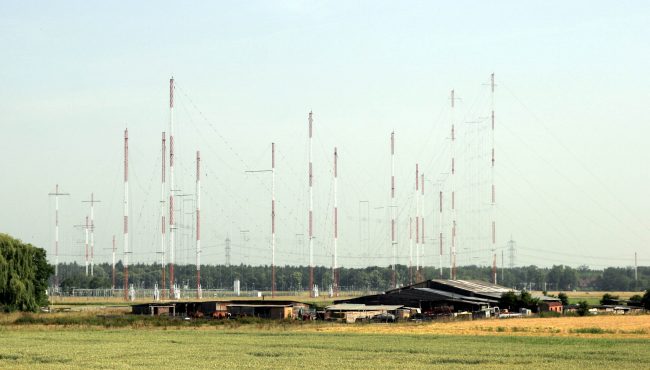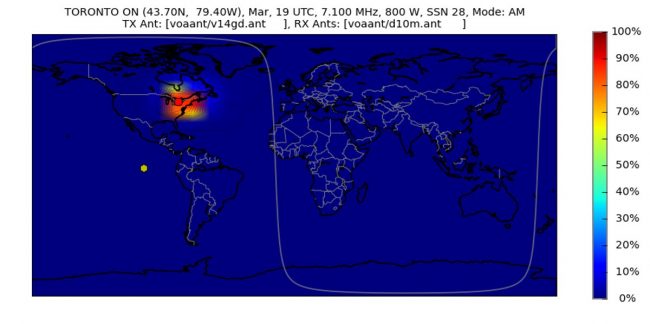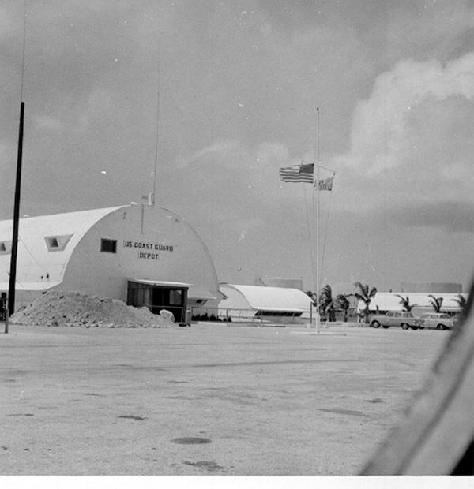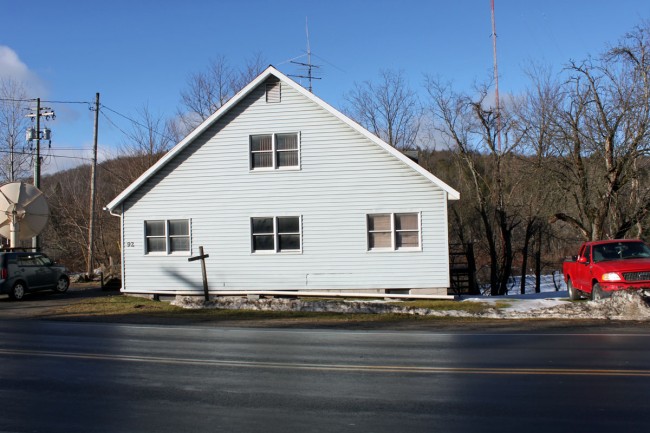I was talking to a friend from Russia about history, my job, and various other things that are going on in my life. I received this reply, which I thought was interesting on a number of levels:
I’m glad we are on the same page about the era of the ‘cold war’. We were interested in your life even more than you in ours. We had almost no sources of information except for ‘The morning star’ which is a newspaper of the Communist party of Great Britain. The Voice of America and the Liberty (or Freedom, I have no clue because for us it was ‘RADIO SVOBODA’) were extremely hard to tune on. All foreign broadcasts were jammed. So to listen to the station you should maximize the volume up to the limit which was dangerous. Soviet houses are not at all soundproof and your neighbors could easily rat on you. Since that time I’d been dreaming of a small radio with could receive a clear signal from abroad. Of course we have the Internet broadcasting now but they often use old recording instead of live air and the signal depends on your data carrier. You should be online, you should have an app and unlimited data on your contract, your phone should be charged all the time. Too many conditions. Unfortunately a lot of foreign sites are banned here and the trend is to make this number bigger and bigger.
I find that perspective interesting. We take for granted our ability to listen to information and listen to different points of view, even those we don’t agree with. There are still trouble spots in the world and some people are not as fortunate. It is very easy to block internet traffic and there are several countries that currently block access to some or all of the internet, for the safety of their citizens, no doubt. Ideas are dangerous.

In the last ten to fifteen years, many large government shortwave broadcasters have reduced or eliminated their programming favoring an internet distribution model. This is a mistake. It is very difficult to successfully jam terrestrial radio broadcasts. Shortwave Facilities are expensive to develop and maintain, there is no doubt about that. However, as the Chief Engineer from Radio Australia (ABC) once told me “HF will get through when nothing else will.” Ironically, ABC has eliminated its HF service on January 31, 2017.
It seems to me that a sort of “Shortwave Lite” version of broadcasting might be the answer. Use more efficient transmitters with lower power levels closer in to the target areas. Such transmitters could be coupled to rotatable log periodic antennas to target several listening areas with one system, thus greatly reducing the number of towers and land required. Solid-state transmitters with a power of 10-50 KW are much, much more efficient than their tube-type brethren.
DRM30 (Digital Radio Mondiale) has not gained widespread use in the MF and HF bands. Like its HD Radio counterpart, the lack of receivers seems to be one of the adoption issues. As of 2017, there are only four DRM30-capable receivers for sale not counting software plug-ins for various SDRs. That is a shame because my experience with DRM30 reception has been pretty good. I have used a WinRadio G303i with DRM plug-in, which set me back $40.00 for the license key (hint for those nice folks at the DRM consortium; licensing fees tend to quash widespread interest and adoption).

Finally, I have advocated before and still advocate for some type of domestic shortwave service. Right now, I am listening to CFRX Toronto on 6070 KHz. That station has a transmitter power output of 1 KW into a 117-degree tower (approximately 50 feet tall) using a modified Armstrong X1000B AM transmitter netting a 15-32 µV received signal strength some 300 miles away. That is a listenable signal, especially if there is no other source of information available. The average approximate coverage area for that station is 280,000 square miles (725,000 square kilometers). That is a fairly low overhead operation for a fairly large coverage area. Perhaps existing licensed shortwave broadcasters should be allowed to operate such facilities in domestic service.
The point is before we pull the plug on the last shortwave transmitter, we should carefully consider what we are giving up.






Part of the problem is on the receive side. Worldwide demand for inexpensive SW receivers has fallen. Some are still available, including Grundig and Sangean, but fewer retailers carry them. Many countries that jam SW broadcasts also restrict the sale of SW receivers or (more ominously) keep records of who buys them — easy to do when the purchase transaction is online. Legacy receivers that might still be around the house are useless for digital broadcasts.
Totally agree, Paul. I have friends in Russia and behind the old iron curtain that tell me the same. Shortwave is increasingly becoming the domain of state broadcasters, with their version of the news, and religicasters with their version of the truth. Neither are inherently bad, but the unique compelling content that is likely to enthrall a young shortwave listener like you and me is long gone. SDR’s may help bring SW back, as they are cheap, and have amazingly good performance. Combined with inexpensive DRM software that makes SW broadcasters sound like the FM next door, and there is hope.
This is the first time I’ve ever heard of DRM, but the specter of a $40 license plus the unfortunate shared initialization with Digital Rights Management suggests to me a standard that is dead on arrival.
I can certainly appreciate the advances that modern technology have brought us, but there’s something to be said for a radio you can build out of a razor blade, a safety pin, and a few turns of wire.
While there has never been even an attempted prosecution under it, the Logan Act would loom large over this discussion. Effectively it makes it difficult, if not impossible, for non-governmental entities in the USA to use shortwave broadcasting to reach foreign listeners.
I would wager that if the costs could be reasonably contained, NPR would LOVE to beam its content into many foreign countries, especially Russia given the current political climate. But as a private entity, I don’t think they CAN do that, legally. (there’s also tons of issues with rights-management and distribution outside the USA, but I assume it’s mostly the Logan Act)
I’m a little surprised to read of there being less retailers of SW receivers. Perhaps this is part of a decline in independent bricks & mortar dealers, in the face of online selling’s rise.
Jamming aside, it’s easier to access SW broadcasts from outside a repressive nation than it is to arrange Internet access. In North Korea, for example, permitted AM band radios are illicitly modified to receive SW.
1. To track what’s happening with DRM, check out drmna.info.
2. The VOA Radiogram experiments represent an avenue to a possible future for SWBC. See voaradiogram.net. Although these are regular datacasts, VOA considers them technical investigations and not operational programs.
3. The Logan Act in no way forbids non-governmental entities in the U.S. from using shortwave broadcasting to reach foreign listeners. Quite the contrary. Multiple U.S. SWBC stations have existed for decades; today they are propped up by religious programmers. FCC requires them to aim primarily outside the U.S. See NASB’s site shortwave.org – however, not all U.S. licensed SWBC stations belong to NASB.
4. Hoary old FCC rules dating from the Cold War were designed to foreclose private U.S. SWBC stations intended for domestic service. These rules govern advertising copy, transmitter power and coverage areas, but are most likely observed in the breach once the license is obtained.
I have never seen any petition for rulemaking to bring these outdated regs into the 21st century. The closest was the rule change allowing U.S. private SW stations to use DRM at a lower minimum power. No U.S. stations are using that provision. Meanwhile the FCC’s Office of Engineering and Technology continues to authorize experimental digital transmissions in the HF spectrum by for-profit entities. In my view it’s long past time for a sweeping review of the SWBC regulations to permit the kind of domestic operation that Paul has described.
Here in the US, we have an amazing societal inclination towards instant gratification and short-game thinking. It seems like it used to be that some folks could still think in terms of the long-game, and it was usually those folks who rose to power and commanded influence. Lately, to me at least, it seems as if long-game thinking has exited its final death throe. This concerns me greatly, both in terms of my own generation and those which are to follow. Critical thinking has died an horrible death, and what it is being replaced with is scary as hell.
So sure, lets axe the shortwave systems. We’ll save money. It’ll be great. What could go wrong?
Heh. Well, like everything else these days, propaganda has moved to the internet, especially social media. We’re very much behind the Russians on this one.
Regarding digital, is there only one standard and if not, is there one where the receiver license is free?
Oh, and if anyone can suggest a cheap but functional Winradio equivalent, link me up!
Shortwave services, being primarily a state operation, become hard to justify when explaining their function to tax payers who a) don’t see any direct benefit and b) for the most part have never even experienced them. The facilities are expensive to maintain and operate. We’ve all seen the BBC and most of the European broadcasters curtail or kill off their services in the past decades. What is sad is that in stressed periods where infrastructure fails (ie massive internet outages) they would serve readily and perhaps uniquely so. But it’s all about money, like anything else. Tax payers don’t want to pay for them and businesses don’t make huge profits from them. China maintains them because their land mass is so huge that it’s truly the only way to economically reach far flung regions. And the propaganda value is cherished as well. It seems like the world is slowly transitioning away from the broadcasting model we are all familiar with to an on-demand model, mostly via IT, and may be a harbinger of what is to come with other radio services eventually. We just don’t care about community anymore, whether it be in our locals or via sharing a radio experience. I say this as an almost life-long SWL, ham, and being in the broadcasting profession. I’m not in the camp that is taking the “radio is dead” mantra to the streets at all, but I think shortwave is just not coming back because there is no economic driver and the anti-tax/anti-government sentiments around the world have caused congresses and parliaments to seek out the low hanging fruit to add to their political trophy collections.
Agree with your observations on the utility of HF to provide minimum equipment broadcast services over large areas. (well, I would wouldn’t I…), but seriously, a residual HF domestic service should be retained by any country that has low density populations dispersed over large spreads of variable geography (e.g. Australia, Canada, Africa, Pacific archipelago nations). Russia & China both retain local-language HF broadcast services for this reason. Ditto Indonesia, Papua-New Guinea, Solomon Islands, Vanuatu
New receivers are available cheaply (already in place in many areas), reliable, economic to run. Modern low-power (< 10 kW) solid-state HF tx are reliable & economical (especially if run from solar PV). All too often natural disasters wipe out local infrastructure and HF from a unaffected site is an easy way to disseminate mission-critical information. Cyclone Pam clobbered Vanuatu in 2015 & HF services from Solomon Islands (their domestic service, similar language) and RA & RNZI were vital in the weeks afterwards. Vanuatu has a strong domestic HF service so its people had the receivers & were familiar with the process of tuning other stations.
In the free world too many Govt./broadcaster decision makers are on another planet where everyone has free mobile internet. Here on planet Earth that figure is about 1/3 of the population. e.g. Fiji has mobile data available at about F$2 a meg – not gonna stream too long at that price.
HF works extremely well technically & economically, when the going gets tough – ask any military.
I am in favor of opening up the SW broadcast bands to USA use, as well as the LW bands, as a means of emergency communications and offering reliable national coverage and for American Programming aimed at Americans. And for ABC/NBC/CBS to offer programming feeds on nationally in case of an emergency.